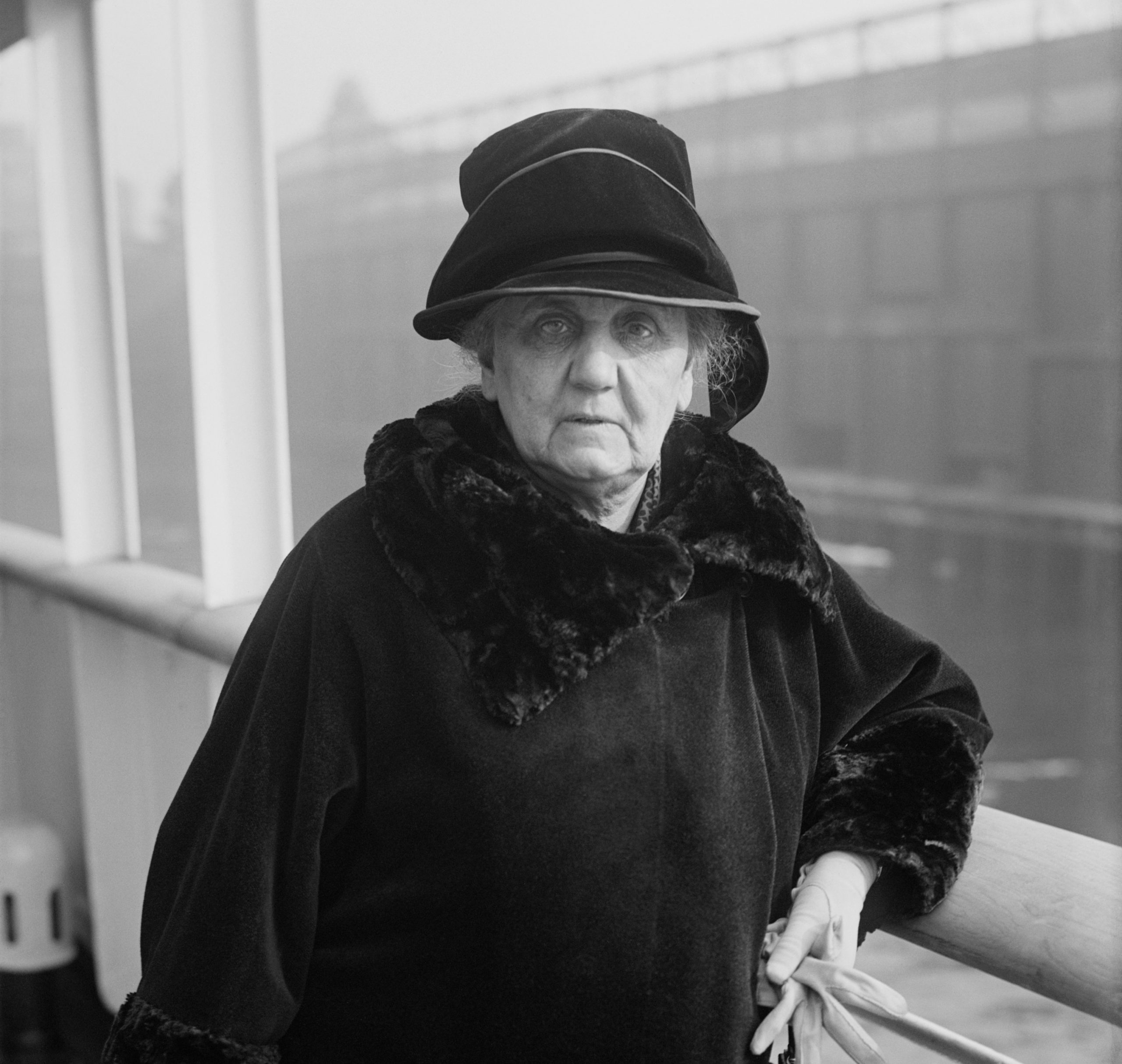
Meet Jane Addams, a Pioneer for Social Change
Published on March 9, 2023
In honor of Women’s History Month, we’re pleased to feature Jane Addams, who founded Hull-House and became a noted advocate for peace, social reform, and women’s suffrage.
By Dave Lifton (@daveeatschicago)
Chicago’s rapid growth from a swampy Midwestern outpost into a major global city could not have been possible without the vast number of immigrants who came here due to the promise of industrial work. As the 19th century drew to a close, they found no better friend than Jane Addams, who founded Hull-House to help them assimilate into American life.
Laura Jane Addams was born September 6th, 1860 in Cedarville, IL, into a wealthy family. Her father, John Huy Addams, owned several mills, served in the Illinois State Senate, helped found the Republican Party, and was a friend of Abraham Lincoln. Her status afforded her the opportunity for higher education, and she was the valedictorian of her class at nearby Rockford Female Seminary in 1881. Addams had hopes of becoming a doctor, but health problems caused her to drop out of Women’s Medical College of Pennsylvania during her first year.

As part of her recovery, she traveled throughout Europe. In London, Addams visited Toynbee Hall, a settlement house where Oxford and Cambridge students provided social services to the impoverished in the East End, most of whom were immigrants. It was a different form of altruism than she had seen, one where the affluent lived in proximity to the downtrodden and led classes rather than simply donating money.
As one who had long looked for ways to help the poor, Addams was inspired to create something similar in America. Upon returning home, she and friend Ellen Gates Starr found the mansion of Charles Hull, who had recently died, at the corner of Halsted and Polk Streets on Chicago’s Near West Side. The caretaker of Hull’s estate leased the house to Addams rent-free for 30 years, and became an occasional donor.
Opened in 1889, Hull-House started as a place where immigrants could receive literacy and art education and quickly blossomed into a full-scale community center serving as many as 9,000 people a week. Unlike similar institutions, it was non-sectarian and provided support to Jews, Blacks, and Latinos in the neighborhood. Addams, Starr, and the other residents at Hull-House (which included both women and men) conducted studies on the causes and effects of systemic poverty, using their findings to advocate for changes to child and women’s labor, juvenile justice, and public sanitation laws.
Addams’ reach extended beyond the Near West Side. She served the on boards of numerous city and national institutions, several of which she helped create, and even took a salaried position as the garbage inspector of the 19th Ward. Through her writings and public speaking, Addams became a nationally known figure in the movement for progressive reform that was taking place across America, and found a friend in President Theodore Roosevelt, who championed many of her causes.
She was an officer of the National American Women’s Suffrage Association and was a co-founder of both the NAACP and the American Civil Liberties Union. In 1910, she became the first woman to be awarded an honorary degree from Yale University.

By V.O. HAMMON PUBLISHING CO. – Postcard, Public Domain
By 1911, Hull-House had become a complex of 13 buildings with English, citizenship, and music classes; a public kitchen; early education, day-care, and a playground for children; a bath house; job training and placement; and a gymnasium among its offerings.
However, Addams’ lifelong commitment to pacifism led her to speak out against World War I, most notably representing the Women’s Peace Party at an international conference in Den Haag, Netherlands. A backlash started, with even her one-time ally Roosevelt attacking her in the press, and escalated after the United States got involved in 1917. She was branded a Communist and kicked out of the Daughters of the American Revolution. Addams held fast to her convictions, and took part in humanitarian efforts throughout Europe after the war. But the experience also left her disillusioned as the Progressive Era came to an end.

Although her influence waned in the 1920s, she was given the Nobel Peace Prize for her life’s work in 1931, the first American woman to be given the award. Jane Addams died on May 21, 1935 at the age of 74.
Hull-House continued to serve the Near West Side until the early 1960s, when much of the surrounding neighborhood was demolished to make way for the University of Illinois’ Chicago campus. The mansion at 800 S. Halsted St., one of two surviving buildings from the complex, was named a National Historic Landmark in 1965, and was turned into a museum to preserve Jane Addams’ legacy two years later.

The Adventure starts when you say it does.
All eATLAS Adventures are designed and built by experienced eATLAS Whoa!Guides. They're always on. Always entertaining. And always ready to go.
Check out our Adventures!